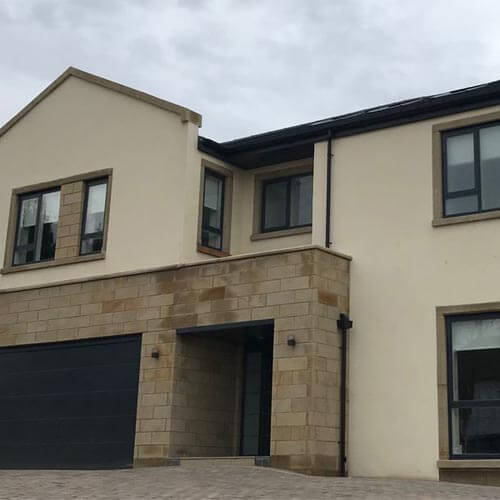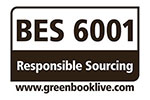01732 360 095
For architects and specifiers, tackling damp issues in buildings can be a huge challenge. This is because there’s no single and infallible “best method” for damp proofing.
Instead, successful damp proofing hinges on a nuanced understanding of the unique circumstances at play. It’s about treating the specific problem, not just the symptoms.
The Diverse World of Damp

Before we delve into solutions, let’s first acknowledge the diverse nature of the problem we’re facing. Damp manifests in various forms, each with their own origins and consequences. The most common of these are:
- Rising Damp: This arises from the ground level, as water ascends through porous brickwork, stonework, or mortar via a method called capillary action. On reaching the internal surfaces above ground, this moisture can create unsightly stains, unhealthy conditions, and also create a further issue with hygroscopic damp (where moisture-attracting salts wreak havoc within the walls).
- Penetrating Damp: When water gains entry through the building’s exterior, either via defects or through porous walls as a result of wind-driven rain. It can stem from faulty render, inadequate guttering, or even cracked brickwork. This type of damp can compromise thermal performance, but it can also lead to structural and frost damage.
- Condensation: Sometimes mistaken for other forms of damp, condensation occurs mostly due to the poor or inadequate ventilation of rooms with high humidity. The resultant damp walls can lead to unsightly and unhealthy black-spot mould.
Diagnosing the Root Cause
Identifying the different types of damp is crucial. Misdiagnosis can lead to wasted resources and ineffective solutions that either don’t solve or exacerbate the problem.
In order to find the root cause, you need to scrutinise the building’s history, construction materials, and surroundings, and look for clues such as:
• Location of damp: Are damp patches concentrated at the base of walls and skirting boards, indicative of rising damp? Or does it appear higher up, suggesting penetrating damp?
• External factors: Are there potential sources of water ingress, such as overflowing gutters or damaged pointing?
• Building age: Older buildings, especially pre-1925 structures, often lack damp proof courses, making them more susceptible to rising damp.
• Ventilation: Is the damp entering from externally or could it be a result of humidity and poor ventilation?
Newton Products for Treating Damp

Newton’s product range consists of damp proofing products that provide different solutions for different damp problems, including BBA approved damp proof membranes.
Much like the best waterproofing solutions, the best damp proofing solutions use different products in combination.
The products in the Newtonite Damp Proofing System for example, can be utilised in different combinations dependent on the scenario. For example, in rising damp situations Newton’s damp proof membranes, tapes and plugs can be used internally as the perfect solution to swiftly reinstate an internal wall finish when the wait time for the wall to dry out is not practical. This also accounts for the fact that it is not always possible, practical, or recommended to inject a new DPC into a structural wall.
Collectively, the products within the Newtonite System make it possible to deal with all forms of dampness. From rising damp to penetrating damp, and residual hygroscopic damp to condensation, the beauty of our approach lies in our flexibility. We don’t advocate for a one-size-fits-all approach. Instead, we provide a diverse toolkit, allowing you to craft the perfect solution for each unique damp challenge.
Damp Proofing Walls
One of the biggest problems related to dampness is when it begins to affect internal walls. When internal walls begin to dampen, the atmosphere of the home can become increasingly unpleasant thanks to the musty smell it can create. Not only that, damp walls can also lead to harmful mould spores that are bad for your health. The Newton range of damp proofing products can alleviate this problem and ensure your walls are as dry as they should be.
A Collaborative Effort
Damp proofing isn’t just about applying products; it’s about understanding the delicate interplay between the building and its environment. Proper ventilation, drainage systems, and even landscaping choices can all play a vital role in preventing future damp issues.
By working together with architects, specifiers, and contractors, we can create a holistic approach that respects the unique character of each building while ensuring lasting protection from damp.
Damp proofing is about wielding the right tools, understanding the problem, and collaborating effectively. With Newton as your partner, you’ll be well-equipped to face any damp challenge.
How Can Newton Waterproofing Help You?
We are dedicated to providing high-quality waterproofing services and technical support throughout the UK, and our team of experienced professionals and specialist contractors have the expertise to tackle even the most challenging projects. We adhere to industry standards and use proven methods, ensuring long-lasting results and peace of mind, so contact us today to get started.
Speak to our friendly, expert team
Our staff are able to provide guidance for projects of all sizes, whether you require some general advice about damp or waterproofing, or support with technical drawings and specifications.

















